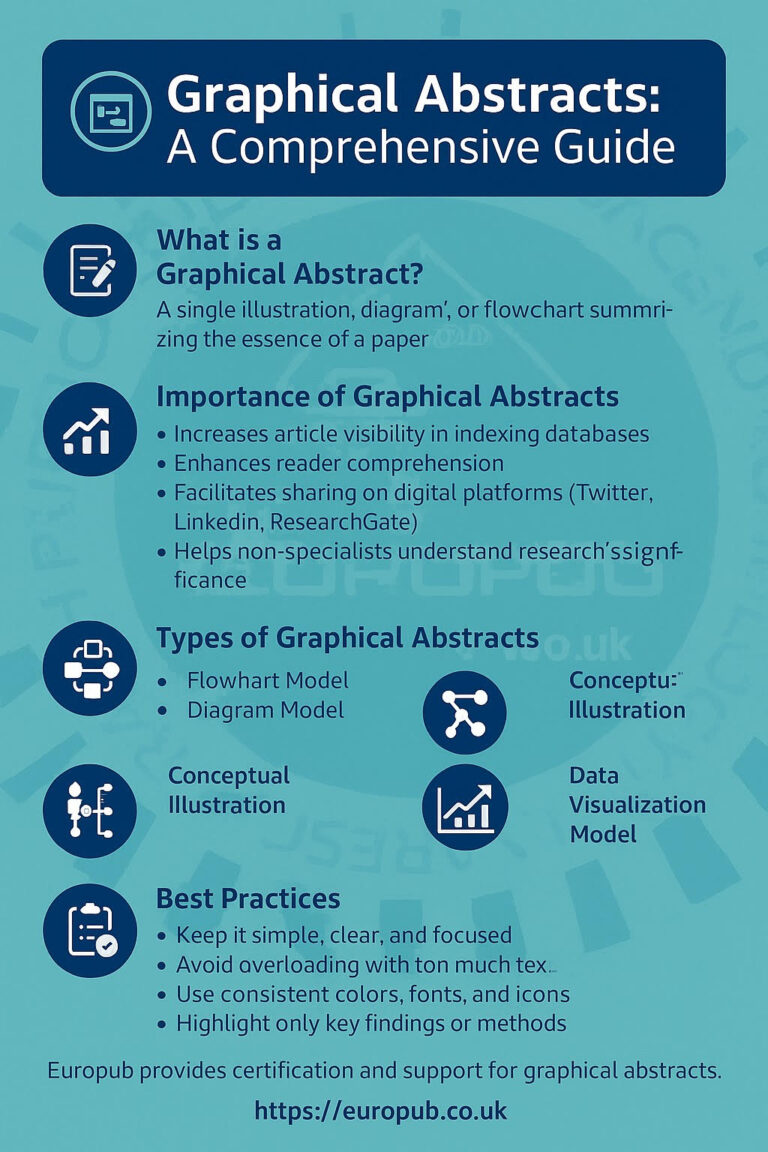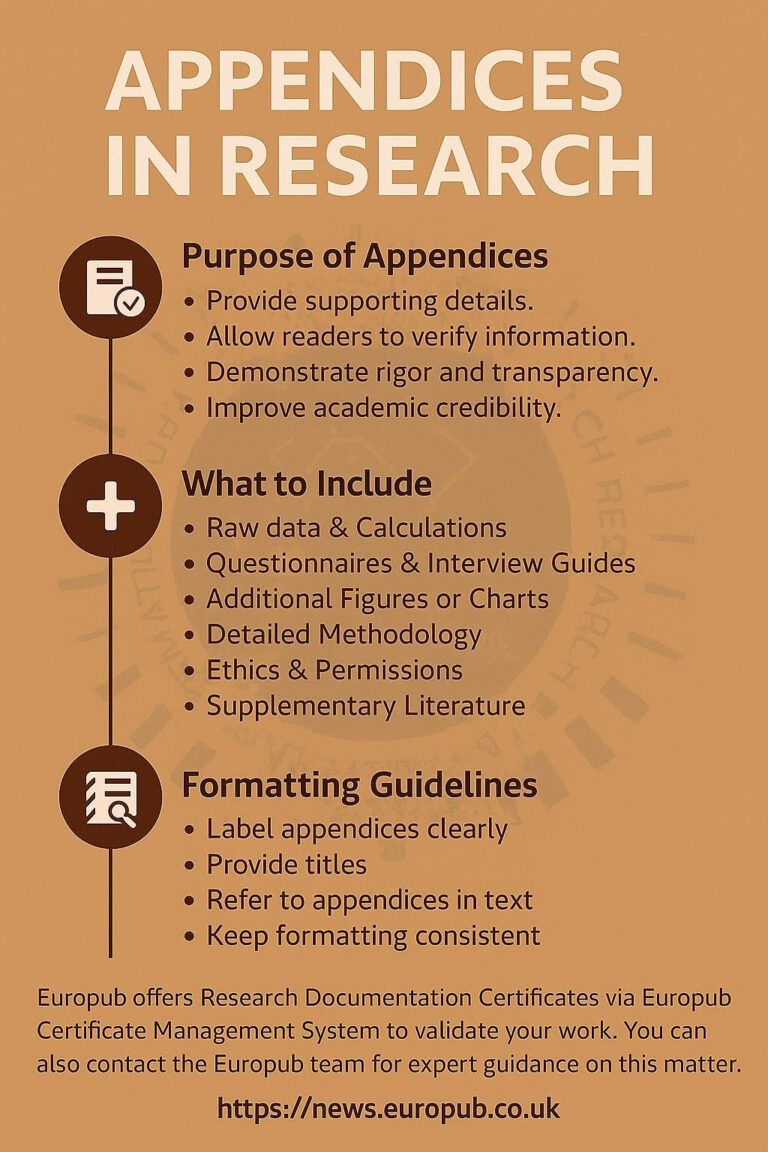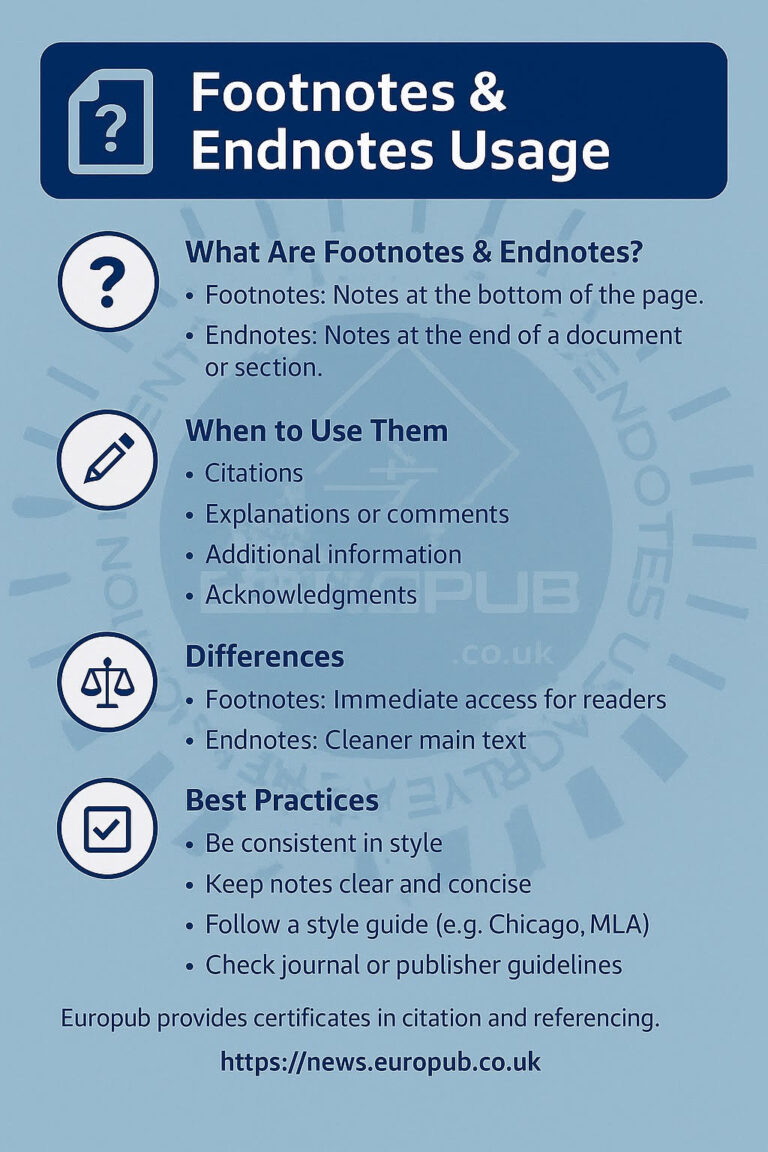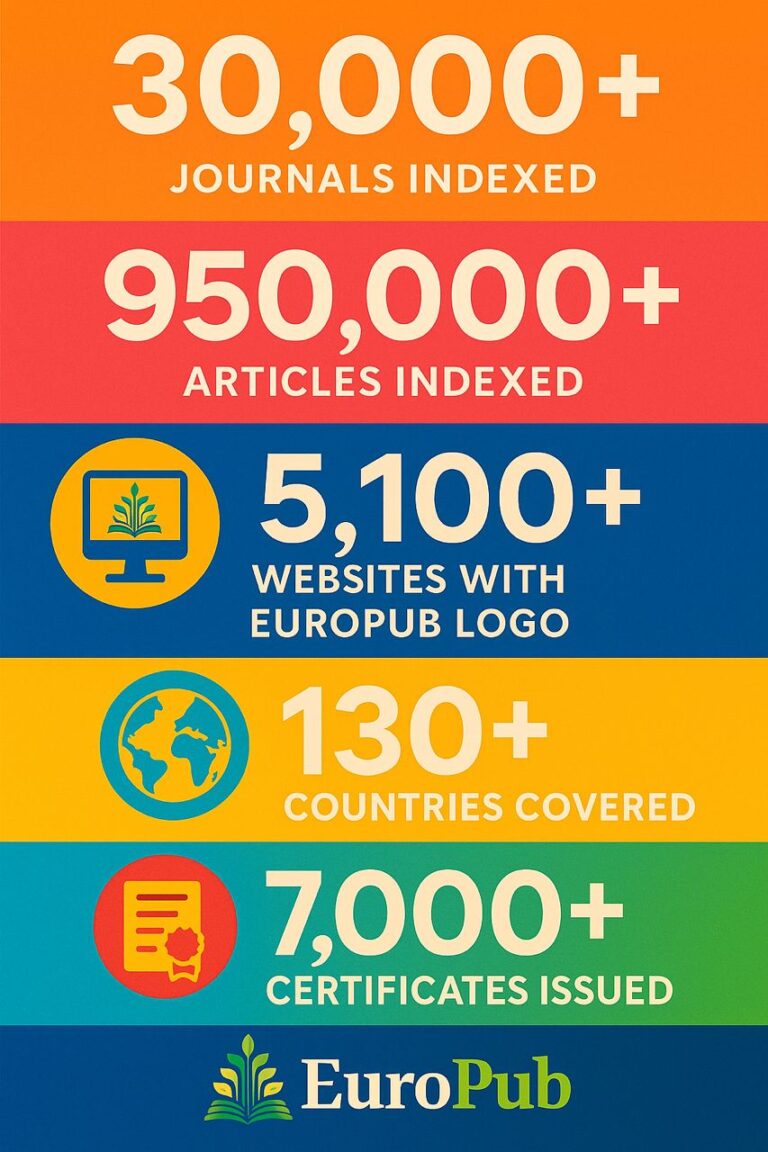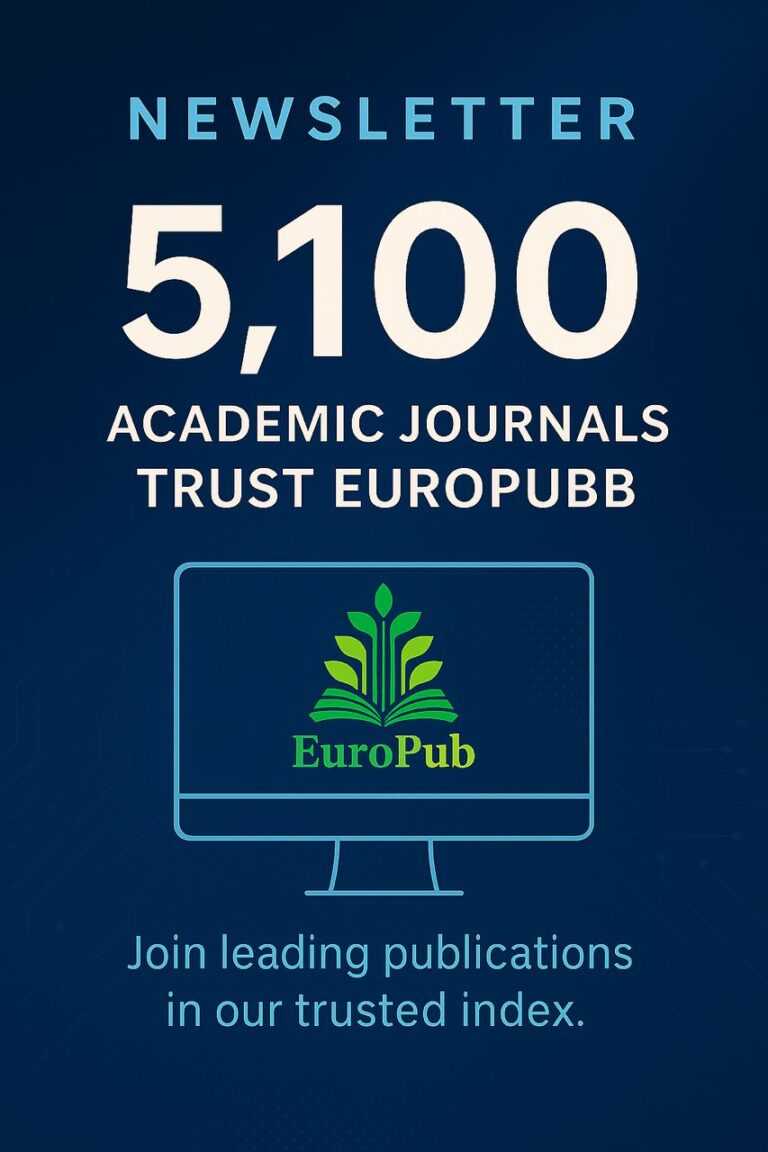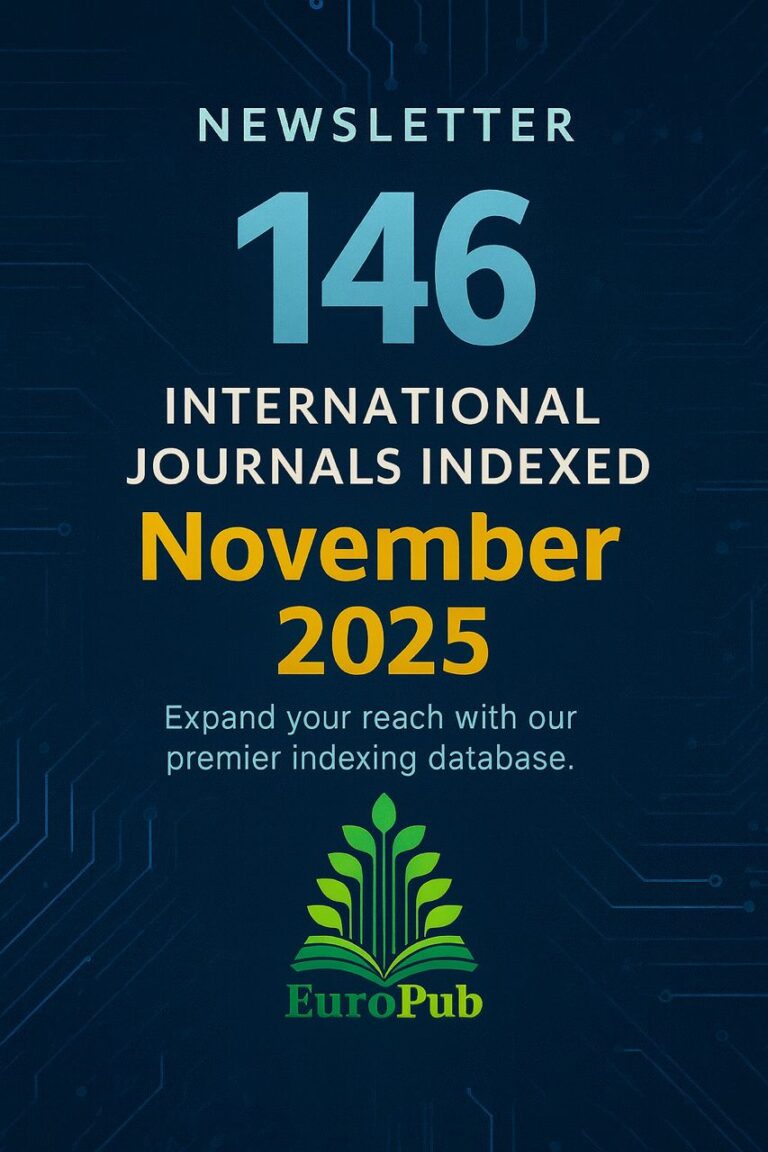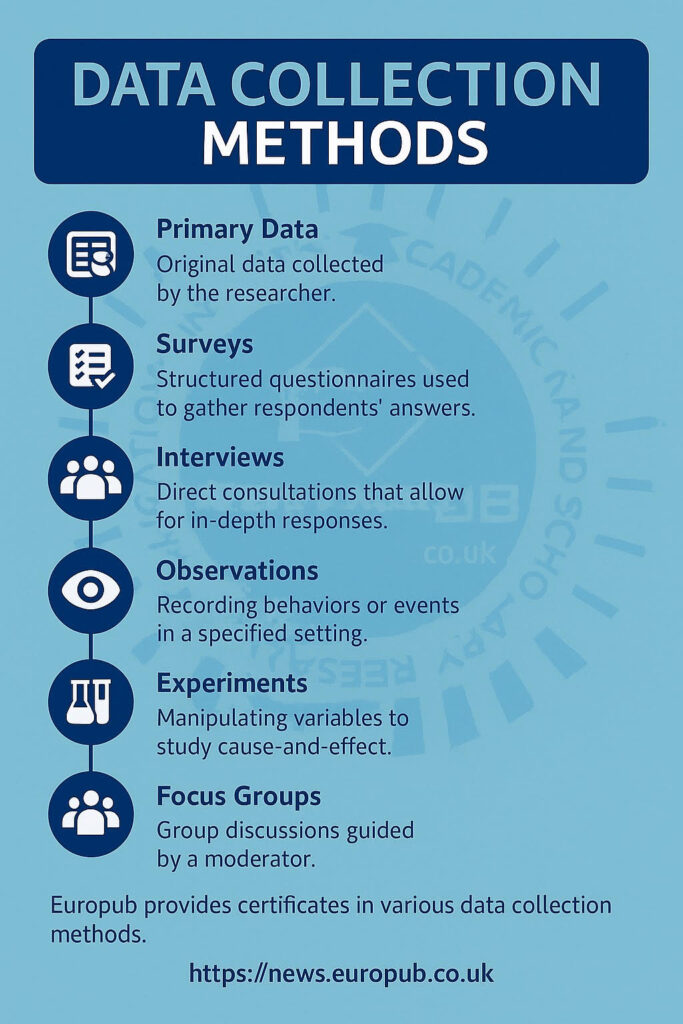
Introduction
Data collection is at the heart of any research project. Without accurate, reliable, and valid data, even the most well-designed study will fail to produce meaningful insights. The method you choose for collecting data directly impacts the quality, credibility, and generalizability of your research findings.
Researchers need to carefully evaluate what type of data they need, from whom, and how they will gather it.
What is Data Collection?
Data collection refers to the process of systematically gathering information from relevant sources to address research questions, test hypotheses, and evaluate outcomes.
- Primary data: Collected directly by the researcher (e.g., surveys, experiments, observations).
- Secondary data: Already existing data used for analysis (e.g., census data, journal articles, archival records).
Importance of Data Collection
- Ensures validity and reliability of results.
- Provides evidence to support or reject a hypothesis.
- Helps in decision-making and policy formulation.
- Allows replication and verification of research findings.
Types of Data Collection Methods
1. Surveys and Questionnaires
- Description: Structured questions used to gather responses from participants.
- Uses: Social sciences, business research, healthcare.
- Strengths: Cost-effective, scalable, quantitative.
- Weaknesses: Risk of low response rates, limited depth.
 Example: Online surveys via Google Forms, Qualtrics.
Example: Online surveys via Google Forms, Qualtrics.
2. Interviews
- Description: Direct interaction to gather detailed responses.
- Types: Structured, semi-structured, unstructured.
- Uses: Psychology, education, market research.
- Strengths: Rich, qualitative insights.
- Weaknesses: Time-consuming, interviewer bias.
3. Observations
- Description: Researcher records behaviors, events, or conditions in natural or controlled settings.
- Uses: Anthropology, sociology, healthcare.
- Strengths: Captures real-world context.
- Weaknesses: Observer bias, ethical concerns.
4. Experiments
- Description: Data gathered by manipulating variables under controlled conditions.
- Uses: Sciences, psychology, medicine.
- Strengths: Establishes cause-and-effect.
- Weaknesses: May lack ecological validity.
5. Focus Groups
- Description: Group discussions guided by a moderator.
- Uses: Marketing, social science, policy studies.
- Strengths: Multiple perspectives at once.
- Weaknesses: Groupthink, limited generalizability.
6. Secondary Data Analysis
- Description: Using existing datasets for new research questions.
- Sources: Government statistics, published studies, institutional records.
- Strengths: Saves time, cost-efficient.
- Weaknesses: Limited control over data quality.
7. Case Studies
- Description: In-depth examination of a single subject or group.
- Uses: Medicine, business, education.
- Strengths: Detailed understanding of unique cases.
- Weaknesses: Cannot be generalized.
Digital Data Collection in Modern Research
- Online Surveys & Polls (SurveyMonkey, Google Forms).
- Learning Analytics (student performance tracking).
- Big Data Techniques (social media, sensors, web scraping).
- Mobile Data Collection Apps (KoBoToolbox, ODK).
Best Practices for Data Collection
 Ensure ethical standards (informed consent, privacy).
Ensure ethical standards (informed consent, privacy).
 Use pilot studies to test instruments.
Use pilot studies to test instruments.
 Ensure clarity in questionnaires.
Ensure clarity in questionnaires.
 Document all procedures for transparency.
Document all procedures for transparency.
 Use triangulation (multiple methods) to increase validity.
Use triangulation (multiple methods) to increase validity.
Common Mistakes in Data Collection
 Leading or biased survey questions.
Leading or biased survey questions.
 Ignoring non-response bias.
Ignoring non-response bias.
 Poorly trained interviewers.
Poorly trained interviewers.
 Lack of proper sampling strategy.
Lack of proper sampling strategy.
 Overlooking ethical approvals.
Overlooking ethical approvals.
Real-Life Example
In a public health study on smoking habits, researchers used:
- Surveys (quantitative data on frequency).
- Interviews (qualitative insights into motivation).
- Observations (checking smoking areas).
This mixed-methods approach provided a holistic understanding.
Useful Resources
- Scribbr – Data Collection
- Research-Methodology.net – Data Collection Methods
- CDC Research Data Tools
Europub Certification & Guidance
Europub offers Certificates in Data Collection Excellence through its Certificate Management System:
- Certificate of Survey & Questionnaire Design
- Certificate of Interview & Observation Techniques
- Certificate of Ethical Research Compliance
 Apply here: https://cms.europub.co.uk
Apply here: https://cms.europub.co.uk
 Main site: https://europub.co.uk
Main site: https://europub.co.uk
 Newsletter: https://news.europub.co.uk
Newsletter: https://news.europub.co.uk
 You can also consult Europub experts for tailored guidance in choosing and applying the right data collection methods for your research.
You can also consult Europub experts for tailored guidance in choosing and applying the right data collection methods for your research.
 Frequently Asked Questions (FAQs) on Data Collection
Frequently Asked Questions (FAQs) on Data Collection
1. What is the difference between qualitative and quantitative data collection?
Answer:
- Qualitative methods (interviews, observations, case studies) provide depth, meaning, and context.
- Quantitative methods (surveys, experiments, statistical datasets) provide measurable, numeric data.
 Reference: Scribbr – Qualitative vs Quantitative
Reference: Scribbr – Qualitative vs Quantitative
2. Which data collection method is best for social sciences?
Answer:
- Surveys and interviews are most common.
- A mixed-methods approach is often recommended for deeper insights.
3. How do I ensure ethical data collection?
Answer:
- Obtain informed consent.
- Protect participant confidentiality.
- Get approval from an ethics committee or IRB.
 Reference: NIH Human Research Guidelines
Reference: NIH Human Research Guidelines
4. Can I use multiple data collection methods in one study?
Answer:
Yes. This is called triangulation. Combining methods (e.g., surveys + interviews) strengthens validity and reliability.
5. What tools are best for online data collection?
Answer:
- SurveyMonkey
- Google Forms
- Qualtrics
- KoBoToolbox (field data)
 Reference: SurveyMonkey
Reference: SurveyMonkey
6. What are the limitations of secondary data?
Answer:
- May not perfectly fit your research question.
- Quality depends on original source.
- Limited control over data accuracy.
7. What is the role of technology in modern data collection?
Answer:
- Enables real-time data gathering.
- Facilitates big data analytics.
- Improves accuracy and efficiency (e.g., mobile apps, digital sensors).
8. How large should my dataset be?
Answer:
Depends on your research goals:
- Quantitative studies → larger datasets for statistical reliability.
- Qualitative studies → smaller, in-depth samples.
 Reference: Sample Size Calculator
Reference: Sample Size Calculator
Conclusion
Data collection methods form the foundation of reliable research. Choosing the right approach ensures validity, ethical compliance, and high-quality insights. Europub supports scholars with certification, tools, and expert consultation to help researchers succeed in publishing and academic recognition.
